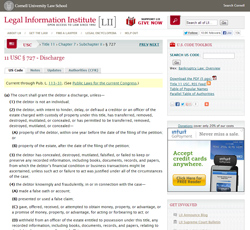
Are you behind in your monthly car or truck payments to the point where you are unable to satisfy your bank or financial institution and they’ve placed the loan in default? If you answered “Yes,” there may be a way out of your tough situation.
If you’re having financial troubles and are desperate to avoid repossession of your car or truck, filing for a Chapter 13 bankruptcy may be the solution that can help you keep your vehicle. In this type of situation, you would be consider the “debtor” and the lender would be considered the “creditor.”
How Your Auto Loan Became Upside-Down
Let’s assume the loan is more than 2 ½ years old (at least 910 days before filing date) and the debt is “upside-down,” which means the unpaid balance of the loan is more than the value of the vehicle. Also, we’ll assume the loan is at a high rate of interest, perhaps 18-21%.
An example of this type situation could be that you bought a new $35,000 car three years ago on a six-year loan. The value of the car has since depreciated to only $12,000. However, because of the high interest rate, you still owe a loan principal amount (i.e., balance before monthly interest is added) of $22,000. In this case the “secured” value of the vehicle is only $12K, because that is the current replacement value if the car was repossessed and sold by the creditor.
Thanks to Chapter 13 of the U.S. Bankruptcy Code, you can force the bank to let you keep your car and, in effect, refinance the loan for the current replacement value. This process is known as a “cramdown” and it is not available in a Chapter 7 bankruptcy.
How a Cramdown Helps You Keep Your Vehicle
In a cramdown, the creditor would need to accept only the value of the vehicle as the principal amount for the refinanced loan ($12K in the example described above), plus only about 4.75% interest per month. This would significantly reduce your monthly auto loan payment.
The lending institution would then discharge the additional amount you owed, as well as the interest due based on the original higher rate. The court will determine the actual interest rate you’ll pay, which will be based on the current prime rate when that is determined.
The remaining amount of the loan principal that is not crammed down will be lumped into the pool of your other nonpriority unsecured debts ($10K in the above scenario). You will only pay back pennies on the dollar of the discharged amount, as part of your monthly payment to your bankruptcy trustee, which is distributed to all of your creditors.
At the end of the Chapter 13 plan, which will last 3-5 years, the creditor must provide you with a lien-free title to your car or truck.
Learn More Auto Loan Cramdowns and Bankruptcy
To learn more about how filing for bankruptcy and pursuing a cramdowm can help you avoid having your car or truck repossessed, and the other ways it can you relieve the pressure of your financial situation, submit the form above or contact us to schedule a free consultation.
